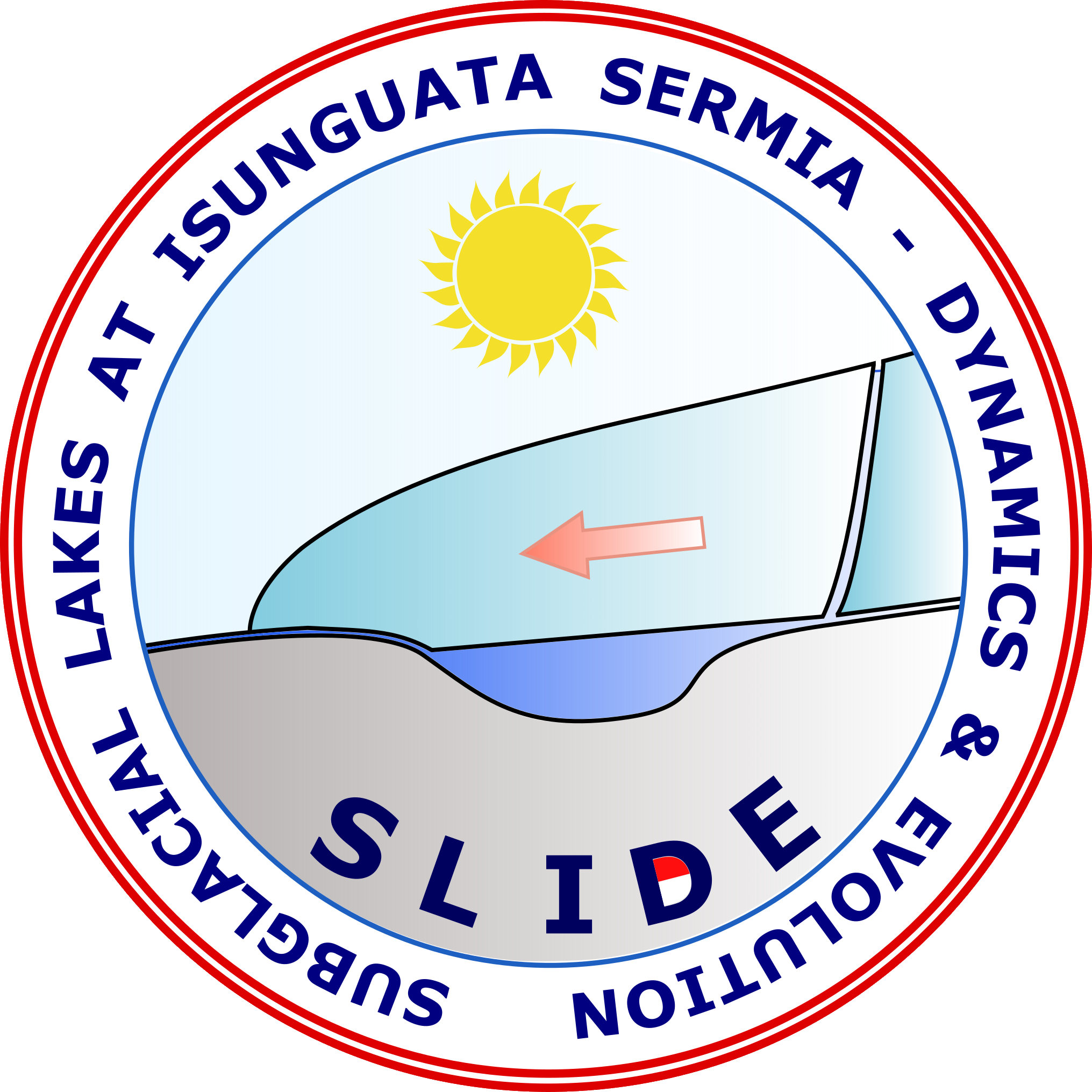Introduction
The SLIDE team is working in Greenland to investigate lakes that are hidden from sight beneath the ice sheet (also termed subglacial lakes). These lakes exist due to the pressure and insulating effect of ice from above, geothermal heat from below and drainage of a large volume of water from the surface to the bed through cracks in the ice.
There is mounting evidence to suggest that subglacial lakes that fill and drain are common and dynamic components of the hydrological system underneath the ice sheet. But until recently they have been largely ignored. Therefore, the key processes controlling how lakes under the ice sheet form and drain, and their impact on other components of the hydrological system (e.g. channels and cavities), and ice flow have yet to be identified. Thus, the current and future importance of subglacial lakes is unknown.
The SLIDE project addresses this research gap through a dedicated field campaign using geophysical sensors and remote sensing to characterise and monitor multiple subglacial lakes beneath Isunnguata Sermia. These results will be used to constrain a numerical model to determine their impact on the future mass balance of ice sheets.
Aims
Our investigation is focused on four subglacial lakes beneath Isunnguata Sermia, a large glacier in south-western Greenland. Isunnguata Sermia drains a 16,000 km2 catchment extending up to the centre of the ice sheet and is 400-800 m thick and moving at a rate of about 120 metres per year in the region we are working, close to where it terminates in a large valley. The four lakes were serendipitously discovered from satellite imagery, which revealed regions of the ice surface (‘bullseyes’) about 1 km wide that were slowly uplifting over a number of years before rapidly subsiding by as much as 30 m over a few weeks to form a surface depression. We interpreted the uplift to record the lakes slowly filling, pushing up the ice, as they capture water draining from the surface through cracks and under the ice. The ice-surface collapses downwards when the lake rapidly drains as a flood downstream and out the front of the glacier.
We have chosen to focus on these lakes due to their location close to the ice margin, logistical support and airport, enabling a low risk and cost research programme, while the access to multiple lakes beneath relatively thin ice (350-500 m) provides an opportunity to characterise the system in detail.
Objectives
- Determine the physical properties of fast-draining subglacial lakes and their surroundings.
- Quantify the temporal evolution of the subglacial lakes and their spatio-temporal interaction with the surrounding hydrological system and overlying ice.
- Constrain and test a catchment-scale subglacial hydrological model to apply to a realistic range of synthetic catchments.
